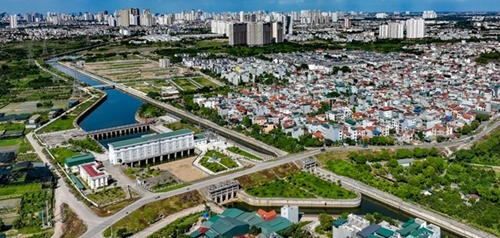Although the general planning was made in a very short period of 12 months, it was carried out meticulously and in line with the legal regulation on planning work, he said, adding the capital city held consultation with 21 ministries and central agencies, 15 cities and provinces in the region, experts, scientists, individuals, and organizations.
    |
 |
|
Hanoi is envisaged to make fast, sustainable, creative and inclusive development. |
He asked experts and scientists to make further recommendations for the planning so that work will be continued to complete it for early examination and adoption in accordance with existing laws.
Under the planning, Hanoi is envisaged to make fast, sustainable, creative and inclusive development, and become a growth pole able to lead and promote the development in the region.
The settlement of the environmental issues is described as an urgent mission of the capital city, with the focus given to reviving polluted rivers and handling inundation. Besides, green development and circular economy will be put at the centre with a view to realizing the net-zero emission target.
Hanoi sets a target that the digital economy will make up 40% of the city’s gross regional domestic product (GRDP), and eyes on a sweeping 65-75% urbanization rate.
Pillars that will shape up the city’s development are culture and heritage; green transition, digital transformation and circular economy; uniformed and modern infrastructure; digital society, digital economy and smart urban areas; and science-technology and innovation.
According to former Deputy Minister of Planning and Investment Cao Viet Sinh, low proportion of industry in GRDP and simple services could not spur the capital city’s growth.
Hanoi should pay due attention to digital transformation and innovation if the city targets fast growth, he said, adding big investment should be made in underground transport to remove transport infrastructure bottleneck.
Agreeing with Sinh’s viewpoint, Minister Dung said that it is necessary to adjust the proportion of industry in the capital city’s GRDP, and to outline a roadmap so as to do away with old vehicles and fossil fuels that do not meet environmental standards during the transport infrastructure development process.
Source: VNA